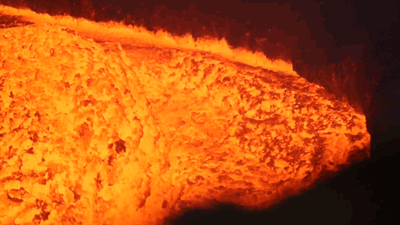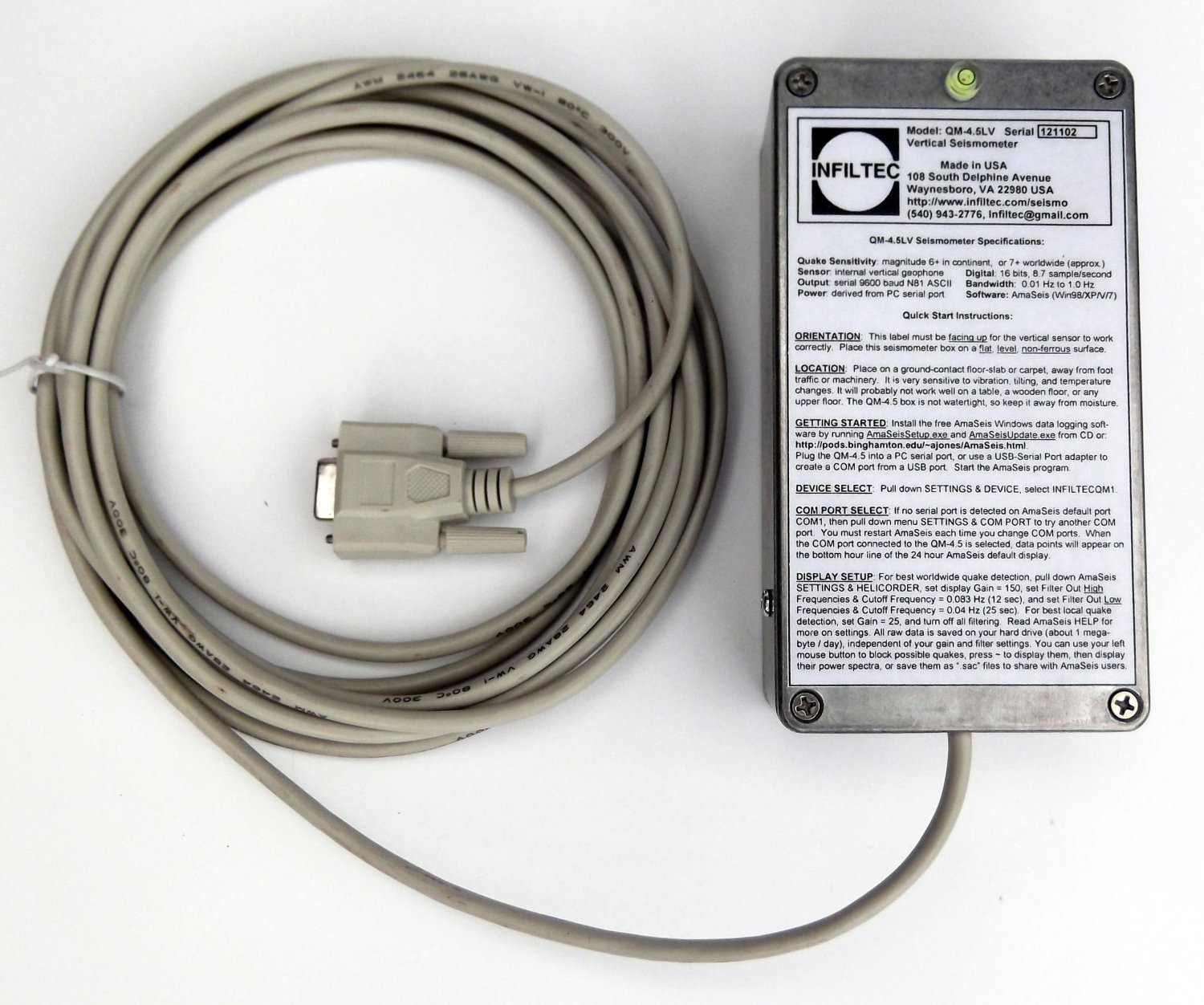
Home Seismograph project
Chappell Hill, TX.
-------------------------------------------------------------------------------
Almost "live" data from our seismometer
^^^ Click on the above picture to see a larger version ^^^
Here is the screen of my Infiltec QM-4.5LV Vertical Seismometer installed in my barn running on a Raspberry Pi 3 running Linux and jAmaSeis software - updated every 1 mins or so. Time is in UTC. Hours are on the left and minutes are listed along the bottom. The bottom of the graph is the most current data and the data at the top is the oldest.
You will notice "ticks" on a seemingly pretty regular schedule in the above image - those are my water well kicking on and off...
------------------------------------------------------------------------------------------------------------------------------
7.5 Mexico Earthquake on 2/16/2018
^^^ Click on the above picture to see a larger version ^^^

Have you ever wondered what all that lava and geologic turmoil under our feet sounds and feels like? Me too!
For many years I had wanted to setup my own seismometer,
just to tinker with it and see if I could capture events like many other
volunteers across the web. Even before the web, fellow Amateur Radio operators like
John Cole and
Frank Cooper inspired me to set one up. They have been tinkering with these
since the '90's. I believe John and Frank are both gone now, thier web
prescence is either gone or hasn't been updated since 2016. I thank them
very much for the inspiration they gave me over the years with scientific
projects, astronomy and Ham radio. They will be missed.
But I didn't really have a good place to set one up... Until now. Now I am
retired and live on a farm out in the middle of nowhere, way out in the country, away from most everything that would make "city
noise" on the seismometer. I have a big barn with a massive concrete slab to
bolt it down to. But I didn't want to break the bank... For my first try, I wanted a
commercial, packaged unit that simply "worked"! Building a big, heavy,
fulcrum based monster that took up several square feet of precious floor space
in the barn wasn't an attractive option. I needed something small, that I
could tuck out of the way up next to a wall or something...
I found this instrument, an
Infiltec QM-4.5LV
seismometer for about $345.00 on Amazon.com, and after some research I gave
it a shot. It is small, it is robust and surprisingly portable. I ordered
it and waited about two weeks for it to arrive. I unpacked it and had it set up and operating in a matter of minutes.
I initially installed it under my house on some bricks and it worked so well I was
able to capture the recent quakes in Nepal on my own screen! (on the other side
of the planet!)

Now, a couple of years later, I have installed it out in the barn. It's a
much better place for it as it is rather quiet over there, on that big slab of
concrete.
At first, I had it installed under the house and it always saw me walking around, slamming doors in the house and it even responds to the surround sound on the stereo! Reggae music looks like a long sustained earthquake... The clothes washing machine would throw it into fits! In a word, it is VERY sensitive! You can naturally filter out most of this noise with the software, but I really need to remove most of this noise the right way - with a proper "quiet" installation spot on a big slab of concrete...
Which is why I put it in the barn. It still sees
the water well kicking on and off, but it's better than under the house!
It is so sensitive, you will see the "pops" on the screen as the metal siding on
the barn expands and contracts when it cools off or heats up around the farm...
I have had it up for several years now and I am impressed with how sensitive
this instrument really is, how easy it is to filter noise with the software and
how it just simply "works"! I even have it uploading a screen shot of my
seismometer software (jAmaseis) to my website every few minutes!
As of February 15th in 2018 I moved the power hungry
Windows 7 Amaseis server duties over to a little Raspberry Pi 3 running Linux
with jAmaseis software. It runs smoother, faster and uses a LOT less power
so I can finally retire the old Windows 7 machine (It acts like a heater!) and
free up some heat load off of the server rooms air conditioning... I
thought it rather humorous that within an hour of me getting everything working,
a 7.5 quake hit central and Southern Mexico - and I captured it! (Good
timing eh?)
One other thing I REALLY LIKE about it, it is extremely PORTABLE! With the
bubble level on top, it's rugged design and the "no calibration" capability it
is perfect for taking out in the field and using it for temporary and portable
installations! The AS-1/AQ-1 fulcrum design can't compete in this arena!
I would highly recommend this unit for those of us who want something that just
simply "works" and can be easily used to verify the performance of other
"home-brew" designs. I am pretty impressed, after a couple of years of constant
use!
The Cons:
1) It is NOT weather-proof! But it is pretty easy to put it inside something
that is! Mine is wrapped in thin plastic and sits on bricks inside the barn
where it is safe, dry and in a quiet environment.
2) It has a big 9 pin serial connector - good luck stuffing it through a small
hole in the wall or floor. I am using 9 pin to USB adapter with a long USB cable. It's easier to poke
those through holes in the wall.
3) The Amaseis software is great, but it barfs on Windows 7 once in a while,
making you have to re-start the PC it is connected to - once in a while. Which
is a pain in the neck if you run it on a machine that does web duties and is
online 24/7/365 in a RACK full of servers like I do... You just have to keep an
eye on it!
Note: It hasn't locked up in quite a while on the Raspberry Pi running Linux!
4) It really DOES need a quiet location to install correctly for you to enjoy
the use of it with normal performance expectations. IT IS VERY SENSITIVE! (But
that's a good thing!)
If I had to do it again - I would buy this unit again in a heartbeat! It arrived
within a couple of weeks, unpacked and installed in minutes and has been a very
sensitive and reliable instrument - the software not withstanding... It is
rugged, portable and affordable for an instrument of its quality. If you are
thinking of owning one - GO FOR IT! Expect it to take about a week to ship
to your door. Setup will take less than a half hour!
One more little tip - Put it on a Raspberry Pi computer so you don't have it "quit" on you constantly... Just trust me on this one...
If you refresh this page - you will see updated info. If you click on the images and refresh the page, you will see updated info.
If you have any questions feel free to drop me a note - n5mbm @ n5mbm.net
See USGS Earthquake data HERE!
Current Seismicity from around the world (right now!)
Map of Public Seismic Network Stations Around the World
---------------------------------------------------------------------------------------------------------